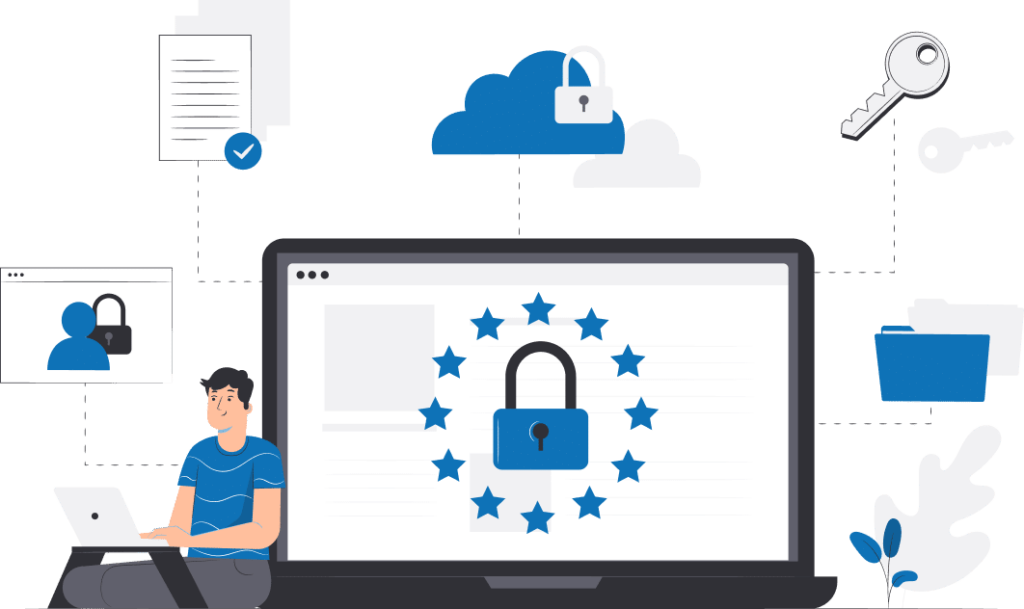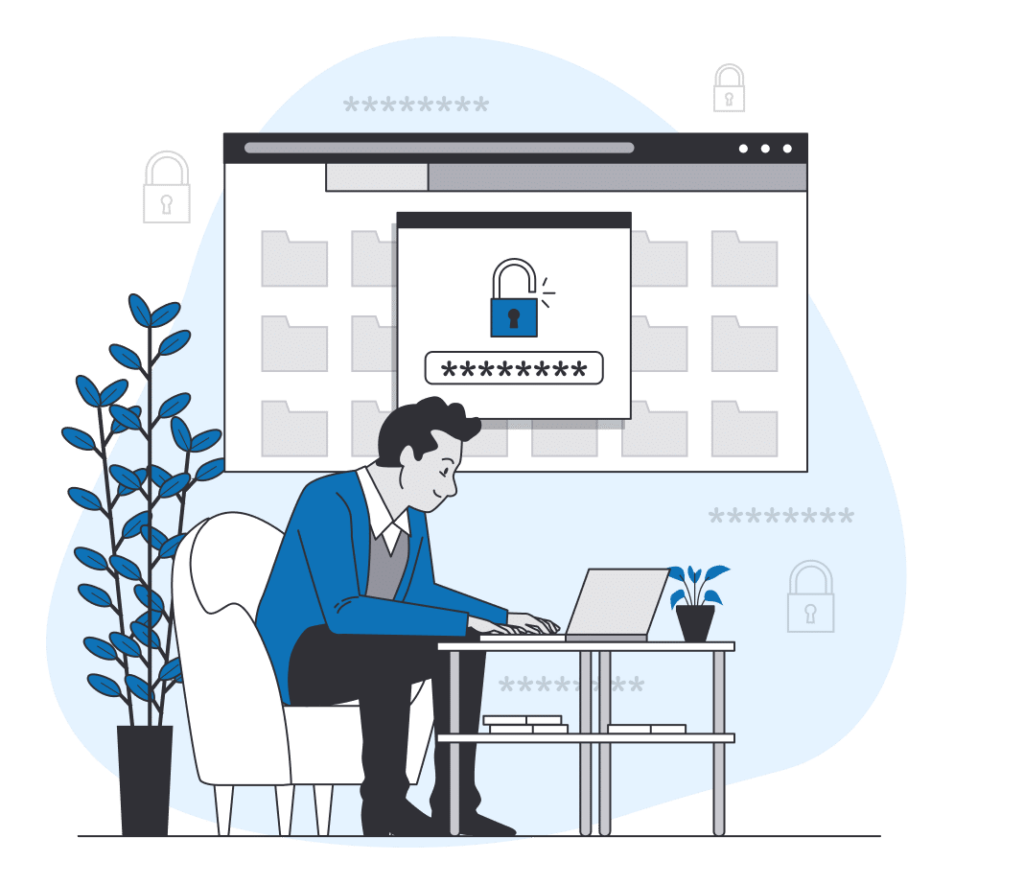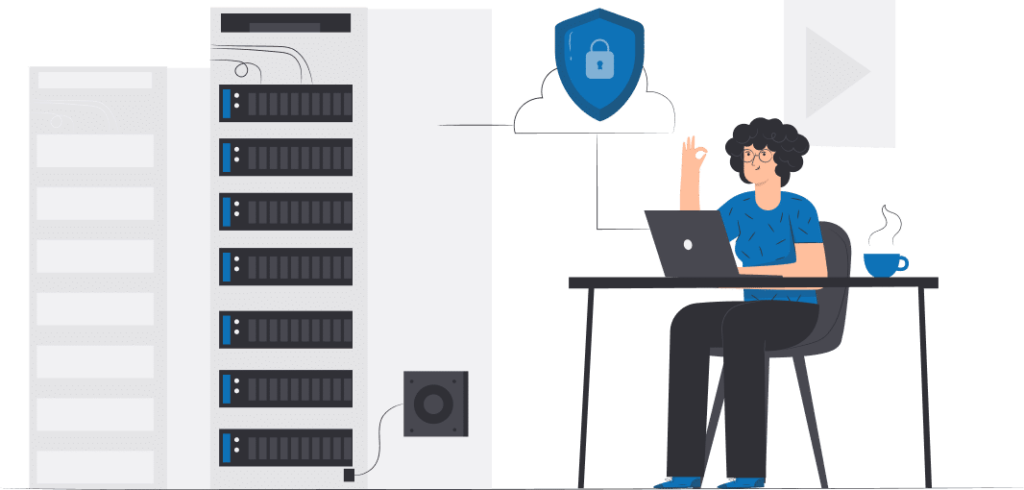Cybersecurity Compliance Preparation Services – At BlueSteel, we appreciate how critical it is to have a strong security program in place. Our team is focused on providing the guidance, tools, and resources to make sure your organization establishes the right foundation to be compliant with industry standards while still being able to successfully protect your assets from cyber threats. With our expertise, we can help ensure that your security program remains robust and up to date-so that you can focus on growing your business.
With how rapidly the landscape and risks change, creating sustained security is an ever-evolving process that needs to be continually monitored and updated. We help your organization stay ahead of this curve by providing expert guidance on security protocols, policies, and procedures. Our team works with you to create tailored solutions specific to your industry, business practices, and corporate culture, ensuring that all relevant regulations are met from C-Level to end-user because security is only as good as the weakest link.
When you partner with BlueSteel, you can trust that we will be there for you on your security journey. Our team is passionate about helping you create a strong security program that will protect both your organization and its data from threats. With our help, you will have the peace of mind that comes from knowing your security measures are in place and are always up to date, making the audit process seamless.
(NIST-800-171 & NIST-800-53: This compliance group provides a range of best practices and guidelines that can help organizations reduce the risk of data loss or breaches. These standards cover a variety of topics, including access control, incident response, system hardening and encryption. They are designed to be comprehensive, so they address both technical and organizational aspects of IT security. The NIST-800 Series provides tools such as risk assessment methods, security configuration checklists and security control matrices designed to make it easier for organizations to meet compliance standards.
The publications also offer guidance on developing an effective cybersecurity program within an organization, including how to structure roles and responsibilities; identify threats; assess risks; develop policies and procedures; implement controls; manage incidents; and measure the effectiveness of the program.
Finally, the NIST-800 Series documents provide useful guidance for organizations and professionals who are preparing for IT security audits. They contain detailed information about selecting appropriate audit objectives and approaches, as well as recommended formats for reporting on results. This can help to ensure that an organization’s security posture is accurately assessed by auditors.
In short, the NIST-800 Series provides valuable guidance to organizations of all types seeking to enhance their cybersecurity posture. By following these recommendations, organizations can protect their assets from malicious actors while helping to meet regulatory requirements in a cost-effective manner.


CMMC is a U.S. Department of Defense (DoD) program that applies to Defense Industrial Base (DIB) contractors. It is a unifying standard and new certification model to ensure that DoD contractors properly protect sensitive information.
DIB contractors hold and use sensitive government data to develop and deliver goods and services. CMMC helps ensure that they secure this information the same way that military departments and government agencies do.
For many years, the U.S. government provided cybersecurity guidance, but there was no way for contractors to prove the strength of their cyber programs. With the creation of CMMC, the government introduced a key new set of certifications, conducted by third-party assessors. Contractors must achieve certification before they can win future government contracts.
Today CMMC applies only to DoD contractors, and the DoD is now beginning to require certification with certain contracts. In the future, CMMC may apply to all non-DoD government contractors as well.
Many higher education institutions are DoD contractors. They perform basic and applied research under contract and are also subject to CMMC. Helen Patton, former CISO at Ohio State, shares how CMMC affects the higher ed community and explains how to get started with CMMC.
ISO 27001 is the leading international standard focused on information security and it was published by to leading international standards organizations – the International Organization for Standardization (ISO), in partnership with the International Electrotechnical Commission (IEC).
ISO 27001 is part of a set of standards developed to handle information security: the ISO/IEC 27000 series. Its full name is “ISO/IEC 27001 – Information security, cybersecurity and privacy protection — Information security management systems — Requirements.”
Not only does the standard provide companies with the necessary know-how for protecting their most valuable information, but a company can also get certified against ISO 27001 and, in this way, prove to its customers and partners that it safeguards their data.
Because ISO 27001 is a widely recognized international standard, achieving this certification can help create increased international business opportunities for both organizations and professionals.


Developed by the American Institute of CPAs (AICPA), SOC 2 establishes criteria for managing customer data based on five “trust service principles”—security, availability, processing integrity, confidentiality and privacy.
Unlike PCI DSS, which has very rigid requirements, SOC 2 reports are unique to each organization. In line with specific business practices, each (MISSING WORD HERE?) designs its own controls to comply with one or more of the trust principles.
These internal reports provide you (along with regulators, business partners, suppliers, etc.) with important information about how your service provider manages data.
There are two types of SOC reports:
SOC 2 certification is issued by outside auditors who assess the extent to which a vendor complies with one or more of the five trust principles based on the systems and processes in place.
The HITRUST approach is based on best practices from laws and regulations, standards, frameworks, risk analysis models, and industry guidance. HITRUST combines these into an integrated framework tailored to the specific needs of each organization. The framework provides organizations with a comprehensive set of security and privacy controls that can be used to manage data and information risk throughout the entire system. This includes addressing policy and procedure requirements, training staff members on security protocols, mitigating risks in IT systems, developing secure communications techniques, implementing authentication processes for users accessing the system, and much more. By having a comprehensive security plan in place, organizations are better able to protect their patient data as well as meet compliance requirements. Additionally, the HITRUST approach also gives organizations access to resources such as consulting services, training materials, and certification programs which can further aid in the process of managing data and information risk. Ultimately, HITRUST is designed to help organizations create a secure environment that stores sensitive patient data while also providing better healthcare outcomes overall.
The HITRUST approach has been adopted by many organizations across a variety of industries as an effective way to manage data and information risk. Organizations such as hospitals, insurance companies, government agencies, research firms, pharmaceutical companies, medical device manufacturers have all successfully implemented the HITRUST framework. Additionally, there are several industry-recognized certifications for organizations who have met or exceeded the requirements set forth by HITRUST. These certifications provide proof that an organization has taken steps to ensure their data and information is secure, compliant, and well-protected.
HITRUST continues to be a valuable resource for organizations looking to protect their patient data and information risk while remaining compliant with regulations. By having a comprehensive security plan in place, organizations can better safeguard their sensitive data while also providing better healthcare outcomes overall. The HITRUST approach can help any organization reach these goals through its comprehensive framework of security controls and access to resources such as consulting services, training materials, and certification programs. With wide and growing adoption across the healthcare industry, the HITRUST approach will continue to serve as an important tool in helping organizations create secure environments that store sensitive patient data.


The Health Insurance Portability and Accountability Act of 1996 (HIPAA) is a federal law that requires the creation of national standards to protect sensitive patient health information from being disclosed without the patient’s consent or knowledge.
In order to ensure HIPAA compliance, organizations must regularly review their security measures and procedures. They must also establish a formal Risk Analysis process that addresses the threats and vulnerabilities associated with their systems and data. This process should include identifying reasonable and appropriate administrative, physical, technical, and organizational safeguards for protecting ePHI. Additionally, organizations should have written policies and procedures in place to protect PHI from unauthorized access or disclosure.
Organizations must develop an information security incident response plan that outlines processes for understanding, responding to, investigating, documenting, reporting, and mitigating security incidents. They must also designate individuals responsible for incident response management who are knowledgeable about both information technology systems and health care operations.
Finally, it is important that organizations provide regular training to employees and business associates about HIPAA compliance. This training should cover topics such as how to handle PHI, the importance of privacy and security, and when it is appropriate to disclose PHI. Training should be offered on a regular basis to ensure that everyone in the organization understands their roles and responsibilities in maintaining HIPAA compliance.
Organizations are ultimately responsible for ensuring that they are compliant with HIPAA regulations. An ongoing commitment to understanding and following these regulations will help organizations protect sensitive patient information while supporting quality healthcare services.
The Federal Risk and Authorization Management Program (FedRAMP) is a government-wide program that provides a standardized approach to security assessment, authorization, and continuous monitoring for cloud products and services. In short, FedRAMP ensures the security of cloud services used by the federal government and provides agencies with a framework to manage risk.
The FedRAMP program includes an assessment process that requires vendors to demonstrate their ability to protect systems, data, and other assets from unauthorized access or compromise. Vendors must follow FedRAMP’s standards for Information Security Management (ISM), Physical Security, System Access Controls, Data Protection, Identity and Access Management (IAM), and Continuous Monitoring for any cloud product or service they offer.
Once a vendor has completed the assessment process and been granted authorization through FedRAMP, its products are available for federal agencies to use. This simplifies the adoption process for cloud technology since each agency does not have to individually assess the security of the vendor’s offerings. It also eliminates the need for costly and time-consuming audits, making it easier for agencies to switch vendors if needed.
With FedRAMP in place, federal agencies can more easily adopt cloud technology with confidence that their data is secure and protected from threats. The program helps ensure a consistent level of security across all government systems, as well as providing assurance that appropriate measures are taken to protect sensitive information. In addition, agencies have access to up-to-date information on the latest government-approved technologies and can be sure they are using the most secure solutions available. By leveraging the benefits of cloud computing while maintaining the highest levels of security, FedRAMP ensures that federal agencies remain safe and compliant with government standards.


Zero Trust is a framework that assumes a complex network’s security is always at risk to external and internal threats.At the core of Zero Trust architecture is the concept of continuous authentication and authorization, which verifies identity before granting access. This type of authentication is typically done using multiple methods including two-factor authentication (2FA), biometric authentication (e.g., fingerprint or facial recognition) or multi-factor authentication (MFA). Additionally, to ensure that users are only accessing approved applications and services, a ZTA should include an identity and access management system (IAM) to control what systems resources a user can access.
To further secure user interactions with the enterprise network, a ZTA should incorporate adaptive security policies based on contextual information such as device posture, geolocation, risk profile, and resource access patterns. These policies can be enforced with technologies such as network segmentation and virtual private networks (VPNs). The use of encryption further helps to protect data in transit and at rest, while monitoring solutions help detect malicious activity. Finally, a well-implemented ZTA should include an incident response plan that outlines how security teams will respond to suspicious events or breaches. By authenticating users, controlling access, enforcing policies, encrypting traffic, and having a response plan in place, companies can drastically reduce the risk of a successful cyber attack.
To properly implement Zero Trust architecture within an organization requires coordination between IT security professionals and other stakeholders across all levels of the business. It is essential to have an understanding of what resources need protection and which types of attacks are most likely targeting those resources. Additionally, security teams should be familiar with the available technologies, such as IAM and VPNs, that can help protect their networks and data. By taking a comprehensive approach to security, organizations can ensure they are properly equipped to handle all types of threats. In doing so, they will be able to achieve Zero Trust architecture in order to keep their networks safe from malicious actors.
The Zero Trust concept is not new; however, it has become increasingly important as cyber criminals continue to evolve their tactics and exploit weaknesses in traditional network defenses. Companies must take a proactive approach by implementing measures such as multi-factor authentication and identity access management systems in order to protect themselves against these sophisticated attacks. With the proper planning and execution of a Zero Trust architecture, organizations can be confident that their networks are secure and they are taking the best steps possible to combat modern cyber threats.
Reach us Monday through Friday
8am – 6pm